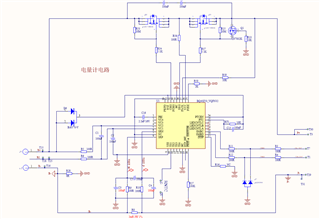Other Parts Discussed in Thread: BQ40Z50, BQSTUDIO
Tool/software:
Hi
When I was using the BQ40z50 battery meter, I found a problem. When welding the battery cells, I first welded B -/B1, then left it for 3 days, and then welded B+. After completing the B+welding, I conducted a semi-finished test on the battery(Charge and discharge test, with current of 6A/2A/1A). During the test, I found that the voltage of B -/B1 cells was 10-20mV lower than that of B1/B+cells. In order to control the voltage difference between the two cells within 8mV, after completing the semi-finished test project, I activated the battery and let it rest to balance the voltage of the two cells on its own. However, after balancing for 1 day, I found that some batteries had a situation where the voltage of cell 2 was 0, and there were approximately 22. A battery with such a situation was analyzed, and it was found that the protection board did not leak electricity. The balancing function of the protection board was also tested without any problems, I am currently very puzzled as to why the voltage of cell 2 is 0. I hope to receive your help. Thank you very much


